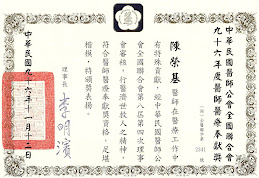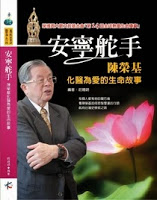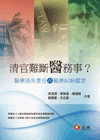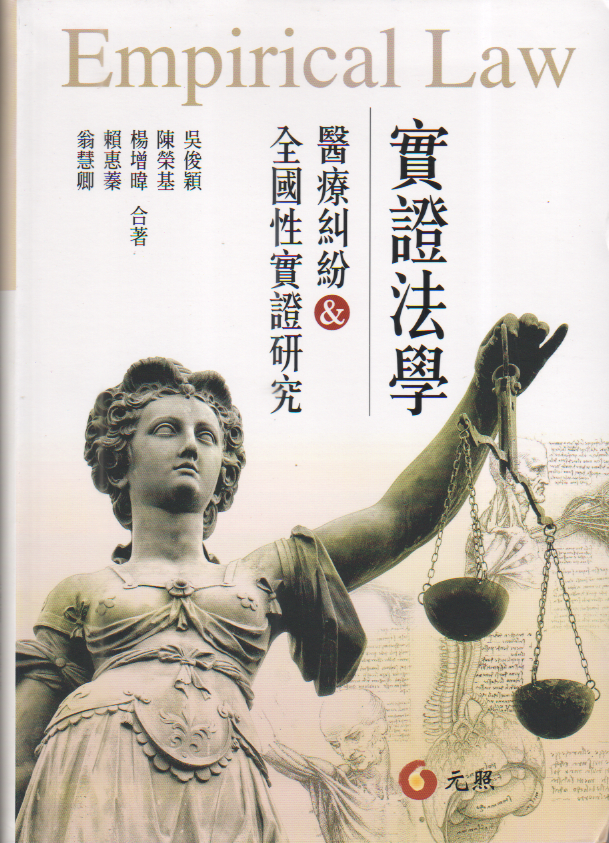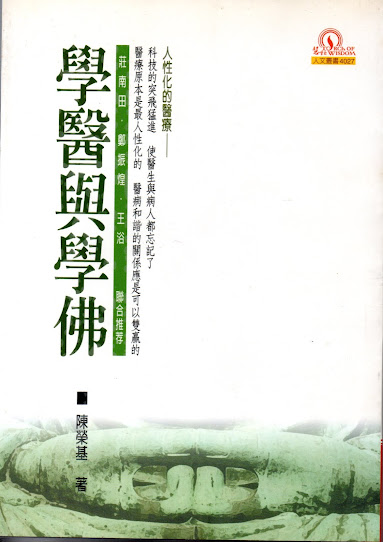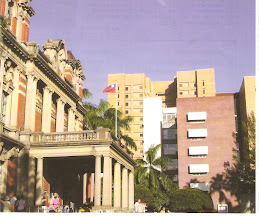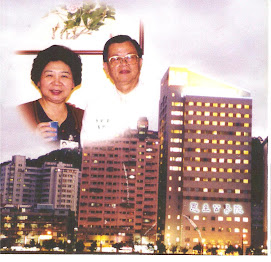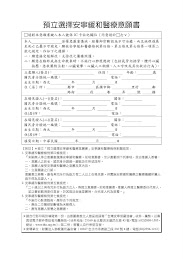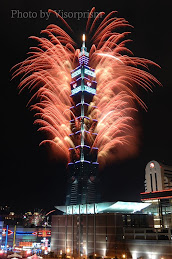The Open Area Studies Journal, 2009, 2,7-11
The Spirit of Humanism in Terminal Care—Taiwan Experience
*Rong-Chi Chen, M.D.
*Department of Neurology, En Chu Kong Hospital, 399 Fuhsing Road, San Hsia Town, Taipei County 23702, TAIWAN
Key words: Terminal care, hospice, palliative care, CPR, DNR, resuscitation, humanity
TEL: +886-2-2351-2796
FAX: +886-2-2357-0253
Running title: Humanism in terminal care
Abstract: The purpose of medicine is to prevent illness, to cure disease, to relieve suffering and to maintain health. The duty of the physicians, of course, is to rescue life, to cure disease, to relieve suffering and to promote health. However, “birth, aging, sickness and death” are unavoidable path of human life. When a person has reached the end of his life, when death is impending, the duty of medical professionals will be to provide love and humanistic care for the patient, to relieve pain and suffering and provide a peaceful and dignified demise. Hospice palliative care is a holistic and humanistic care for terminal patients by providing physical, psychosocial and spiritual wellbeing of the patients and their families. This paper reviews the history of development of hospice palliative care in Taiwan. We have made innovative development of promoting registration of do-no-resuscitation (DNR) living will in the IC card of the national health insurance system and training of Buddhist monastics as chaplains.
INTRODUCTION
The purpose of medicine is to prevent illness, to cure disease, to relieve suffering and to maintain health. However, “birth, senescence, illness and death” are unavoidable path of human life. When a person has reached the end of his life, when death is impending, the duty of medical professionals is to provide love and tender care for the patient, to relieve pain and suffering and to provide a peaceful and dignified demise. This is the humanism in medicine, in contrast to the purely “scientific and heroic fighting” of saving life to the last minute. The caring domain of a physician is from birth to death, from “womb to tomb”. At the end of terminal care, physicians should maintain a religious and holistic spirit of “removal of suffering and provision of happiness” to their patients, as much as he could. The present paper intends to report the experience of the development of the humanistic terminal care movement in Taiwan. Hospice palliative care is a holistic and humanistic care for terminal patients by providing physical, psychosocial and spiritual wellbeing of the patients and their families. This paper reviews the history of development of hospice palliative care in Taiwan. We have made innovative development of promoting registration of do-no-resuscitation (DNR) living will in the IC card of the national health insurance system and training of Buddhist monastics as chaplains.
THE DEVELOPMENT OF HOSPICE PALLIATIVE MEDICINE [1-7]
In the Sanskrit of ancient Indian Buddhist sutras, “Vihara” was used to name the place for training or residing of monks and nuns. In the Catholic tradition, “Hospice” was used to name a cloister or rest station for pilgrim persons since the 5th Century. It was also extended for a place of housing for the injured, the sick and the dying persons. In 1967, Dr. Dame Cicely Saunders founded the St. Christopher’s Hospice in London, incorporating “hospice” into a modern medical facility for the care of cancer and other terminal patients.[1] Since then, the “hospice movement” has spread to Europian, American and Asian countries. It reached Japan in 1973. Some of the hospice facilities of Buddhist hospitals in Japan are called “vihara”.[5]
In 1990 the first “hospice ward”[3] was introduced into Taiwan in the Christian Mackay Hospital by Dr. Chang-Hong Chung. In 1995 I opened a “palliative care ward” in the National Taiwan University Hospital. Gradually, many organizations have joined into this hospice-palliative care movement, namely the (Christian) Taiwan Hospice Foundation (founded in 1990), the Catholic Sanipax Medical Education Foundation (1993), the Buddhist Lotus Hospice Care Foundation (1994), the Taiwan Hospice Organization (1995), the Taiwan Academy of Hospice Palliative Medicine (1999), the Taiwan Nurse’s Hospice Association (2005), and the Taiwan Assoication of Clinical Buddhism Study (2007). The Ministry of Health (MOH) and the Bureau of the National Health Insurance (BNHI) also gave official support to the movement. We are observing a prosperous development of hospice palliative care in Taiwan.[2-7]
Palliative care or palliative medicine was used for the medical care aiming at relieving suffering instead of curing of the diseases. The word “palliate” originates for the Latin “palliatus ” or “palliare”, meaning to mitigate, to reduce the severity of, to relieve. It was used in the 16th Century in medicine for the relief or reduction of pain and suffering.
In 1990 the World Health Organization (WHO) published guidelines for the palliative care as: ” This is the active total care offered to patients with a progressive illness and their families when it is recognized that the illness is no longer curable, in order to concentrate on the quality of life and the alleviation of distressing symptoms within the framework of coordinated service. It provides relief from pain and other distressing symptoms, integrating the psychological and spiritual aspects of care. Palliative care neither hastens nor postpones death. Its goal is to achieve the best quality of life for both patients and their families.”[8]
In 2002 WHO further defined the palliative care as “Palliative care is an approach that improves the quality of life of patients and their families facing the problems associated with life-threatening illness, through the prevention and relief of suffering by means of early identification and impeccable treatment of pain and other problems, physical, psychosocial and spiritual.”[9]
In palliative care, the quality of life is more important than the length of life. Lately, it is the consensus of people working in this field to put palliative care and hospice care together as “hospice palliative care”.
THE CONFLICT BETWEEN SCIENCE AND HUMANITY
“Up until recent times, most people died at home, peacefully and in the company of family. Due to the advancement of medical science, however, many people now expire at a hospital. Since the invention of cardiopulmonary resuscitation (CPR) in the 1960s and the subsequent relentless advance of medical technology, our life span may have increased, however, it appears reasonable to suggest that the quality of life at its end may not have improved. Instead, healthcare providers, in particular physicians, now fight for lives against all the odds, promoting the false belief in the omnipotence of medical care and the triumph of man over nature. As a result of this "heroic fight" by physicians, more and more people now die a painful death in the hospital. Physicians often cannot accept the defeat of losing a patient, while relatives are unwilling to let their family member go or believe they are disloyal or unloving if they do not let the physician attempt a last CPR.”[10]
“Cancer has become the leading cause of death in the developed countries, including Taiwan. When cancer enters the terminal stage, and the physician has exhausted all treatment options and knows that the patient cannot be saved, the individual will often be left to his own devices and will have no choice but to bear the torment and suffering of terminal cancer. When the patient is near the end of life, however, the position becomes diametrically opposed and CPR is applied, with the patient, who is already at the psychological and physical limits of suffering, subjected to yet more anguish, and often consigned to a bitter death.”[10]
With the advance of modern science and technology and the change of social environment, many people now a days, died in the hospitals or nursing homes. The ever changing of new techniques in CPR makes the physicians more determined to fight against the death-call and to rescue lives to the last minute. Medical education usually neglected the teaching of how to face the terminal patients gracefully. In the emergency services, medical or surgical wards or intensive care units, when a terminal patient lost his ability to breath, CPR will mostly be applied. Physicians believe that to rescue life is their royal duty, and can not accept to lose the patient without exerting the last effort of CPR. The patient’s family can not let go their beloved. They felt that letting their relative to die without allowing physician to make the last effort is unfilial or unloving.
Is it necessary for physicians to apply the terminal CPR to these patients, knowing that it is a futile effort?[11-13]As a matter of fact, at the end of many terminal diseases, CPR is a non-effective attempt. Many studies agreed that in the following situations, CPR is a futile treatment and should not be applied: i.e. the terminal cancer patients, patients with multiple organ failure or vital organ failure, such as terminal hepatic failure, heart failure, lung failure, renal failure and brain failure (severe dementia), AIDS or motor neuron disease.[14-17]
The principles of medical ethics include “ beneficence, nonmaleficence, autonomy and justice.” Since we know that at the end of terminal failure, medical evidence already agreed that CPR is no more “beneficent” and even is definitely “maleficent” in giving more pain, why we can not obey patient’s “autonomy” of wishing “do-no-resuscitation, DNR”? By obeying patient’s DNR order (autonomy), we will not hurt the patient again by applying CPR (nonmaleficence), we can also help to offer patient a peaceful dying (beneficence). If a terminal patient is given endotracheal tube and mechanical ventilator as part of the CPR effort and sent to the intensive care unit to stay for a few hours or days before death, it is a waste of medical resource and preventing the chance of other patients who are in need of the ICU beds. Isn’t it “unjustice” to the latter?[16-17]
In Taiwan, the Law of Medical Care stipulates in the Item 60: “A hospital or clinic should use all its ability and facility to rescue life of any critical patient.” The Item 21 of the Law of Physicians requires “A physician should use all of his ability to rescue the life of any person in critical condition.” There was a physician subjected to law suit because of obeying the DNR wish of a terminal cancer patient. The Ministry of Health gave a Statement of Number #786849 in 1989 refusing the request of patient or family member’s DNR wish. The family member often asked for CPR out of the loving and filial heart. The physician was afraid of facing legal dispute if he obeyed the DNR order of the patient. Some physician also felt that he was obliged to do the CPR out of his “royal duty” and “loving heart” of saving life. Thus, many patients who died in a hospital continued to suffer from the futile, painful and meaningless terminal and futile CPR,[10,14-17] because CPR is a default practice in dying patients.[18-19]
THE HOSPICE PALLIATIVE CARE ACT
A “Natural Death Act” was passed in 1976 in California, promoting the concept of “living will”. This law gives the right to US citizen while he was in healthy condition, to make choice of receiving CPR or not (i.e. DNR) at the end of life. In hospice palliative care, DNR is an important practice to ensure a peaceful dying. However, it is not concordant with the social practice and also was not completely legal in Taiwan as stated in the last paragraph. In order to make this practice lawful, to respect the fundamental human right of peaceful death, the hospice team started to lobby for the passing of a Natural Death Act in Taiwan. On May 23, 2000 a “Hospice Palliatvie Care Act” was finally passed. It was the first in the world to put “Hospice palliative care” into the name of a legal act. The Act gives definition of the “Hospice palliative care” as “palliative or supportive care for decreasing or relieving pain and suffering of the terminal patients.” The Act gives a citizen the right to choose DNR at the final stage of life when he is suffering from an incurable terminal illness. DNR is an important measure in the hospice palliative care. The Act defines CPR to include: endotracheal tube (tracheostomy), mechanical ventilator, external cardiac massage, drugs used for restoration of cardiopulmonary functions, cardiac electroshock, pace maker and any other rescuing measures. Patient can choose to reject all of the above measures or any of them, such as refusal of endotracheal tube. DNR can also be applied to many terminal patients not staying in the hospice palliative units.[11-16] In Item 7 of this Act: “For accepting do-no-resuscitation (DNR), two conditions have to be met(1). Two physicians have to agree on the diagnosis of terminal patient; (2). A signed living will of the patient asking for DNR.” If a patient is unconscious or unable to make a clear expression, a close relative can sign a permission for DNR. The priority of the relatives according to closeness is defined, for example, the spouse has the highest authority to make the decision, followed by the children, the parents, the siblings in that order. This “Hospice Palliative Care Act” gives the right to our citizen to choose CPR or DNR at the terminal stage of his life. DNR indeed is important in providing a peaceful death in the hospice palliative care. This Act also defines a “terminal patient ” as “one suffering from severe disease or injury whose death is inevitable in a short time as determined by his attending physicians.” It is not restricted to cancer patients only. Tsai et al’s study in Taiwan [16] showed in 893 patients who died in a surgical intensive care unit, 66.7% had a DNR order signed by the family members.
PROMOTION OF DNR
Medical professionals are encouraged to teach patients and citizens the right of choosing DNR. In the United States, the Patient Self Determination Act (PSDA) (enacted in 1991) requested patients to be informed of their rights to participate in their medical decision making.[20] In Taiwan hospitals are urged to give the following statement to the new admission patients: “According to the Hospice Palliative Care Act, every citizen has the right to sign an advanced directive of ‘choosing hospice palliative care’ or ‘choosing DNR’ to avoid unnecessary terminal suffering.”[21-22] It is much easier to discuss this issue when a person is healthy, young or having minor disease. If a person is old or having serious illness, it is much more difficult to start the communication about the DNR issue. One can sign this living will of DNR while healthy and young. One copy of it can be handed over to the hospital to keep with the medical record. Another copy can be kept with oneself. In order to avoid keeping the DNR form in the pocket for emergency use, under the advice of the hospice team, the Ministry of Health (MOH) and the Bureau of National Health Insurance (BNHI) agreed to incorporate this DNR order into the Intergrated Circuit Card (IC Card) of the BNHI. The IC Card is a small plastic card like an Indentification Card or a driver’s liscence. It contains a computer chip which can store many medical informations of the patient. Patient has to present his ID Card to clinics or hospitals when he visits a physician for medical consultation.
The hospital (or the person himself) can send this signed document to the Taiwan Hospice Organization (THO) (www.tho.org.tw). The THO will keep the formal document and send an electronic message to the MOH and BNHI to put into the medical data system of BNHI. The person can then go to a hospital or a clinic to ask for downloading this DNR order into his IC Card and also into the e-medical record of the hospital. Once this process is completed, in the future any hospital can read out this message from the IC Card. There is a column in the basic data of the IC Card which will show that the owner of this card has signed for “DNR” or signed for “organ donation”. This IC Card registration will be more convenient than the portable DNR order as proposed by Payne and Thornlow. [23]
The physician can act according to this living will order of DNR when the patient’s medical condition is terminal and CPR can offer no more benefit to the patient. The patient can then be referred to a hospice team or taken care of in the medical ward to ensure him a peaceful demise.
THE DILEMMA OF CPR OR DNR
Before the passing of this Hospice Palliative Care Act, there was a medical doctor sued for obeying his patient’s DNR request. After inauguration of this Act in 2000, there was an emergency unit physician sued because of performing CPR to a 94-year old woman with chronic obstructive pulmonary disease. A physician can face legal dispute in terminal patient care whether he performs CPR or not (i.e., DNR).[10,14,21,22]
In taking care of a terminal patient with impending respiratory failure, the attending physician should act carefully with loving heart. Is he a terminal patient? Is there a DNR order signed by the patient or by the family member? Is there a DNR order document or DNR order message in the IC card? If the patient is a terminal patient and there is a DNR order, the physician should discuss with the family members with empathy to reach a consensus of helping the patient to die in peace. At this stage of dilemma, a physician should act according to ethics and to law. A loving heart with consideration of the best interest of the patient is the best guideline. In a patient with serious illness, discussion about the final DNR or CPR issue in advance is important. It will minimize the chance of medical legal disputes.
The recording of DNR order in the IC card can offer a peaceful ending of the patient and giving the patient and the family a gracious ending of a difficult life. We strongly advocate to the public: “Please do not abandon your sacred right. Prepare your good death or peaceful dying in advance by signing a DNR living will.” We also try to persuade to the medical professionals: “Do not neglect your solemn duty of helping patient a good death. Please help the patient to make DNR planning in due time and offer hospice care to the patient in need to ensure peaceful dying for each patient.”[22]
PEACEFUL DYING IS DEMANDED BY MANY RELIGIONS
In hospice palliative care, the spiritual need and psychological care of the patients are as important as the physical care. We wish to provide physical, psychological and spiritual comfort to the patients. Sogyal Rinpoche said in his book, The Tibetan Book of Living and Dying, “I hope….that doctors all over the world will take extremely seriously the need to allow the dying person to die in silence and serenity. I want to appeal to the goodwill of the medical profession, and hope to inspire it to find ways to make the very difficult transition of death as easy, painless and peaceful as possible. Peaceful death is really an essential human right, more essential perhaps even than the right to vote or the right to justice; it is a right on which, all religious traditions tell us, a great deal depends for the well-being and spiritual future of the dying person. There is no greater gift of charity you can give than helping a person to die well.”[24] Christians also wish to respond to the “summon of God”, to return to the heavenly kingdom in peace, and no more suffering.
Most religions ask for “free of pain and enjoying happiness”. It is the great vow of a Bodhisattva to “relieve pain and to offer eternal happiness” to all sentient beings. The purpose of hospice palliative care, providing most humanistic care to the terminal patients is to relieve the patients from physical, psychological and spiritual pain. Of course, it is unkind to add pain to the terminal patients by performing terminal futile CPR.[17,21,22,24]
TRAINING OF BUDDHIST MONASTICS AS CHAPLAINS
Hospice palliative care is a multidiscipline team work and a total care. The word “Hospice” originated from the Christian culture. The first organization to use the word “hospice” in modern hospital was called “St.” Christopher’s Hospice.[1] It further illustrates the importance of religious care in hospice palliative medicine. Clergymen are important members of the team for providing spiritual care. Patient’s spirituality can be enhanced by participating in religious activities, such as a Bible study, Buddhist recitation and prayer.[25,26] In the Catholic and Christian tradition medical services were used in the religious missions. Hence, medical training was given to pastors. It is much easier to find pastors to join the hospice team. The Hospice Education Center of the Mackay Hospital provides these pastors additional training for hospice care. However, in the Buddhist history, there was no such tradition. No monks or nuns were ever trained for providing service in the hospitals. The Buddhist Lotus Hospice Care Foundation took the initiative responsibility of establishing such a training facility at the Palliative Ward of the National Taiwan University Hospital (NTUH) in 1998. Thanks to the organization of Professor Ching-Yu Chen, director of the NTUH Department of Family Medicine and the Venerable Shi Hui-Min, dean of the Dharma Drum Mountain College of Buddhism, the training course gradually matured. It started the first effort of training Buddhist monastics as chaplains to participate in medical care in the Buddhist history. Many trainees are currently serving in many hospice palliative units as chaplains. In 2007, the trainees joined to establish the “Taiwan Association of Clinical Buddhism Study ”. Buddhist chaplains became an important team in Taiwan’s hospice care. We are trying to promote the “clinical Buddhist monastics training program” in the curriculum of the College of Buddhism in the university systems.
GOOD TERMINAL CARE IS HUMANISTIC EXPRESSION OF MEDICAL CARE
When a terminal patient is dying after having already suffered from so much pain in his illness, how can we treat him by giving an endotracheal tube in the process of performing CPR and keep him further suffering alone in the intensive care unit? Good death is an important human right.[22,24,27,28]What is good death? If the following conditions can be met, a person is thought to have achieved good death:[28-31] “Knowing that death is near; accepting death peacefully; having proper arrangement of personal and interpersonal affairs; being the right time and ready to accept it; having made good bye to the loved, the relatives and the friends; reaffirmation of the past life achievement; physical condition is well taken cared of; pains and suffering symptoms are satisfactorily controlled; emotionally calm; anxiey and depressive feelings are relieved; autonomy is respected; final wishes are fulfilled; knowing that the family member’s grief will be taken cared of; nothing to hang over; nothing to worry about.”
Hospice palliative care is to provide the above mentioned care. Hospice palliative care hope to fulfill the final wishes of a terminal patient, try to offer the final journey free from pain, suffering, nor regret. As a patient, are you ready to accept the coming ending? As a medical profession, are you ready to help your patients?
“In one's final moments, quality of life may be more important than the mere prolongation of existence. Physicians who respect patients' wishes and provide hospice palliative care, can foster a peaceful and dignified departure from life, although the benefits that this provides may not be easily determined empirically. Filial duty and love should find its expression in being with the family member at the end of his life, and in encouraging acceptance of disease, quiet life in his last days and peaceful passing. Where it is unavoidable, the death of a patient is not a medical failure. Not being able to facilitate a peaceful and dignified demise is, however.[10] Being alive is the ultimate present. Ending life peacefully is the best blessing.
CONCLUSION
When a person has reached the end of his life, the duty of physicians is to give humanistic care for the patient, to relieve pain and suffering, and to provide a peaceful demise. Hospice care provides humanistic care to the terminal patients. This article reviews the development of hospice care in Taiwan. Promotion of DNR living will in advance and registering this living will in the National Health Insurance IC Card is an important measure to ensure a peaceful dying. Since Buddhists constitute about 70-80% population of Taiwan, training of monastics as chaplains to serve in the hospice is emphasized. Hospice palliative care is a holistic and humanistic care for terminal patients by providing physical, psychosocial and spiritual wellbeing of the patients and their families. We have made innovative development of promoting registration of DNR living will in the IC card of the national health insurance system and training of Buddhist monastics as chaplains. We believe that these can be used as models in further improvement of hospice care in other countries. In one's final moments, quality of life may be more important than the mere prolongation of existence.
REFERENCES
2. Rong-Chi Chen’s Blog: http://profrcchenmd.blogspot.com
3. Lai YL, Su WH. Palliative medicine and the hospice movement in Taiwan. Support Care Cancer 1997; 5: 348-50.
4. Chen RC. To learn medicine and to learn Buddhism. Taipei: Tow of Wisdom Publ. 2002.
5. Chen RC. The peace and beauty of life--hospice palliative medicine. Taipei: Lotus Foundation. 2004.
6. Taiwan Academy of Hospice Palliative Medicine. Hospice palliative medicine--theory and practice. Taipei: New Wen Ching Dev Publ. 2007.
7. Chao CS. Physician, life and death. Taipei: Bo Ping Cult. 2007.
8. World Health Organization. Cancer pain relief and palliative care. Geneva: World Health Organization. (Technical Report Series No 804). 1990.
9. World Health Organization . Pain relief and palliative care. In National cancer control programmes. Policies and managerial guidelines 2nd ed. Geneva: World Health Organization. 2002.
10. Chen RC. Medical personnel should actively promote the concept of terminal DNR. Tzu Chi Med J 2006; 18: 155-7.
11. Von Gunten CF. CPR in hospitalized patients: when is it futile? Am Fam Physician 1991; 44: 2130-4.
12. SUPPORT. A controlled trial to improve care for seriously ill hospitalized patients. JAMA 1995; 274: 1591-8.
13. Sidler D, Arndt HR, van Niekerk AA. Medical futility and end-of-life care. S Afr Med J 2008; 98: 284-6.
14. Chen RC. Living will for good death. Formos J Med 2008; 12(4): 470-2.
15. Lynn J, Harrel F Jr, Cohen F, et at. Prognosis of seriously ill hospitalized patients on the days before death: Implication for patient care and public policy. New Horiz 1997; 5: 56-61.
16. Tsai YS, Lin YL, Huang SJ. End-of-life care in critical illness. Taiwan J Hospice Palliat Care 2007; 12 (3): 312-20.
17. Wallace SK, Ewer MS, Picker KJ, Feeley TW. Outcome and cost implications of cardiopulmonary resuscitation in the medical intensive care unit of a comprehensive cancer center. Support Care Cancer 2002; 10: 425-9.
18. Streim JE, Marshall JR. The dying elderly patient. Am Fam Physician 1988; 38: 175-83.
19. Oliver I, Eliott JA. The perception of do-not-resuscitate policies of dying patients with cancer. Psychooncology 2008; 17: 347-53.
20. Teno JM, Braco KJ, Mor V, et al. Changes in advance care planning in nursing home before and after the Patient Self Determination Act: report of a 10-state survey. J Am Geriatr Soc 1997; 45: 939-44.
21. Payne JK, Thornlow DK. Clinical perspectives on portable do-not-resucitate orders. J Gerontol Nurs 2008; 34: 11-6.
22. Chen RC. DNR does not equal to hospice palliative care. Taiwan Med J 2008; 51(4): 36-9.
23. Chen RC. How clinicians handle DNR. J Healthcare Qual 2008; 2(5): 34-7.
24. Sogyal Rinpoche (Gaffney P, Harvey A, editors). The Tibetan book of living and dying. San Francisco: Harper. 1994; p. 186.
25. Chao CS. Psychiatric mental health nursing and spiritual care. J Nurs 1998; 45(1): 16-21.
26. Taylor EJ. Spirituality, culture and cancer care. Seminars in Oncol Nurs 2001; 17(3): 197-205.
27. Weisman AD. On dying and denying. A psychiatric study of terminality. New York: Behavioral Publ. 1972; p. 36-41.
28.Hartley J. A good death. Nurs Times 2008; 104: 18-20.
29. Cheetam N. Teaching a good death. Nurs Stand 2008; 23: 62-3.
30. Hsu HW, Hu WY, Cheng SY, et al. Good death assessment of pediatric patients with terminal cancers at a palliative care unit. Taiwan J Hospice Palliat Care 2005; 10(4): 358-70.
31. Gould M. A good death is part of life. Health Serv J 2007; 117: 26-8.


































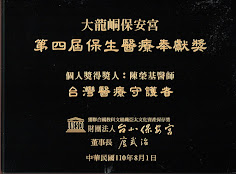

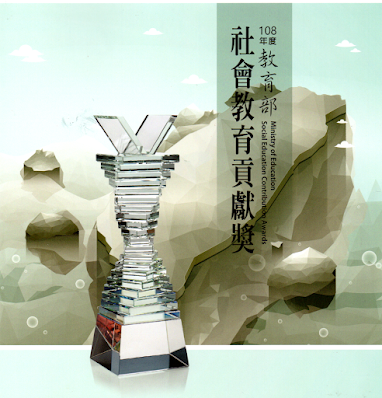

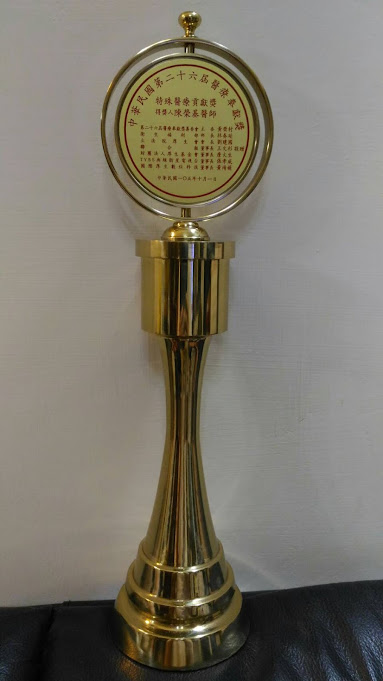
![2015周大觀基金會熱愛生命獎章<[請點下圖連署支持全責護理]>](http://3.bp.blogspot.com/-0XE7vtBmB6Y/VijWC6eVOtI/AAAAAAAAN84/lZpfif8QS5k/s1600-r/Fcover_final.jpg)

